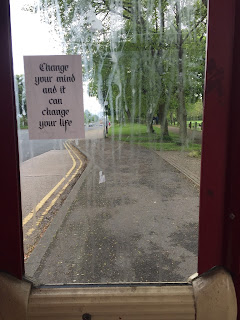Venue: 130 Vicar Lane
Leeds, West Yorkshire, LS2 7NL
Leeds, West Yorkshire, LS2 7NL
Budget: £1250
Including the artist’s fee, materials and installation.
Including the artist’s fee, materials and installation.
As part of a new development on Vicar Lane, East Street Arts, in association with and funded by Hammerson, are launching a new Artist Commission. We are looking for proposals from artists for a new work that celebrates this new space and the collaboration making it happen.
East Street Arts are working in collaboration with Hammerson, Leeds College of Building and Leeds City Council Skills & Employment to offer a range of free workshops and a project space targeted at 18 – 30 year olds in the city to make, create and show work. This is a joint enterprise project to support, develop and platform the skills and talent in the city by providing a programme of workshops, sessions and exhibitions to support young people who are looking to gain experience in working in the creative industries.
This space will be created at 130 Vicar Lane; a property that Hammerson have agreed to lease to East Street Arts for 2 years on a peppercorn rent agreement, meeting their ambition to leave a legacy in the city.
As part of this new development on Vicar Lane, East Street Arts in association with and funded by Hammerson, are launching a new Artist Commission. We are looking for proposals from artists for a new work that celebrates this new space and the collaboration making it happen.
We are looking for something that makes the space distinctive, that recognises the collaboration and practically responds to the space and area: The history of Vicar Lane, the position of the space and its history, the look of the street and building or the kind of activity that will be taking place may all influence the work. You could choose to utilise the extensive window space or building frontage. The piece may be temporary or something more permanent.
Selection will be made by representatives from both East Street Arts and Hammerson.
Date for selection: Thursday 5th May 2016
Announcement: Monday 9th May 2016
Installation of work: June 2016
Announcement: Monday 9th May 2016
Installation of work: June 2016
Deadline: 25th April
I've recently been working on mural for Vicar Lane with Maurice and Aidan, a graphic designer and surface pattern designer. We decided to take inspiration from the historic architecture in the surrounding area of chosen building on Vicar Lane, identifying the structures and designs before deconstructing into more abstract geometric shapes.
Location:
Significance to Leeds & Vicar Lane
Initial ideas, sketches, and influence of architecture on Vicar Lane
Research
Looking at Steve Powers small illustrations within his murals inspired us to create separate hand drawn illustrations to keep a playful tone in the collaborative artist space.
Initial sketches and design ideas for whole mural
Organic marks for background ; experiments
Sticking with a purely geometric theme we strayed away from contrasting hand made strokes and created larger, more transparent shapes in colour as a base layer before adding the smaller geometric illustrations over the top. We stuck with blue, orange and green as a neutral colour scheme that is inviting and balanced. The larger forms worked better behind the smaller illustrations, and the overlap helps unite the background creating a mural design that is connected and whole.

Final Design
Artist Statement / Commission Proposal
130 Vicar Lane is the next step towards Leeds being the capital of culture in 2023. We at Goat Collective are proposing a mural on the outside of the building in question. The mural will be a collection of graphic motifs and symbols, taken from a physchogeographical perspective of Vicar Lane. The architecture, road markings, type and symbols found throughout the lane will be deconstructed and re worked into more contemporary imagery, attempting to display the history of the area within one small space. The concept runs from the idea that Vicar Lane’s history lies in what was there from the beginning, the architecture. The architecture is the one consistent element of the lane itself. Even when new things are built, they are the only things there that will stay the same for a long period of time. The shops and trade inside, the people who live and work there change, but the buildings remain. The aesthetic celebrates the development of this area of Leeds as a whole and it’s history, while the use of the space looks towards the future of artistic creation and collaboration, and the evolution of culture within Leeds.
Another aspect of the design utilises the windows. The windows will be a reflection of the constant evolution within Vicar Lane. For this we are proposing to have the windows change on a regular basis, for example once a month. We propose to have various different artists come in to bring in a new display for each window change. This will help to show further how the space is meant to be a hub for creation and collaboration in the area, by providing constant new visuals for the passers by. We at Goat Collective propose to provide the initial windows display, in three separate styles of work which reinforces the idea of connecting artist’s by displaying their work in one place. We propose a submission system for window displays thereafter. This provides a knowledge and a buzz about your space, encouraging people to engage with 130 Vicar Lane further. This idea allows for the space not only to respond and reflect the city and it’s cultural worth, but it also allows for the space to grow and insists upon an alliance of creatives within West Yorkshire.

















































































